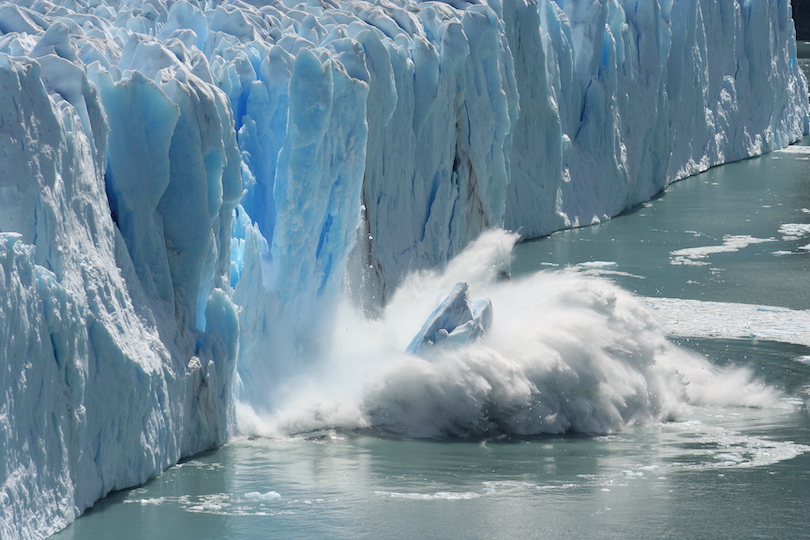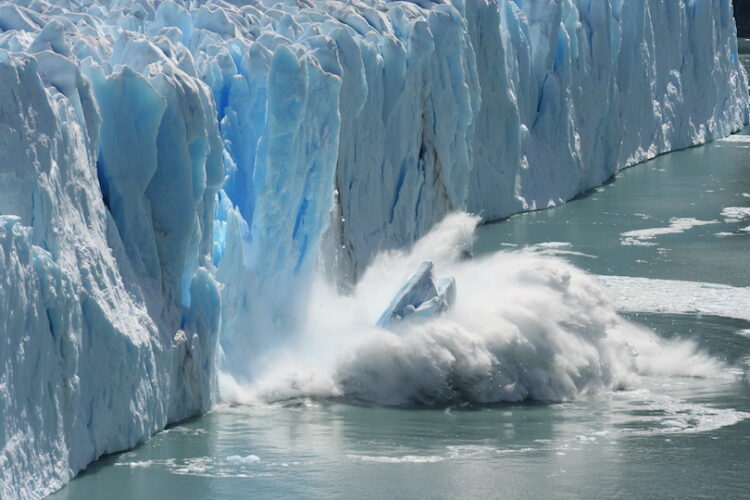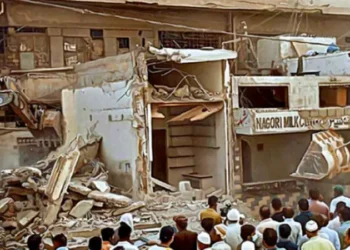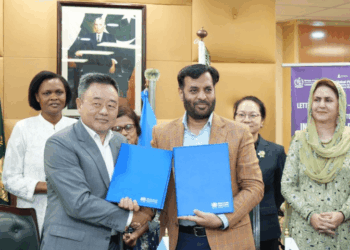On a calm summer morning, as tourists admired the iconic turquoise waters of Attabad Lake, disaster struck. A glacial outburst sent a surge of floodwater down the Burundubar stream, swamping the area and breaching the premises of the Luxus Hotel, a popular high-end resort on the lakeside.
Hotel staff scrambled to evacuate dozens of guests, many of them still in their rooms. Sajid Iqbal, a worker at the hotel, described the panic: “We saw the water rise and rushed to alert everyone. People were terrified. Some ran without shoes.”

The flood came just hours after the National Disaster Management Authority (NDMA) had issued a Glacial Lake Outburst Flood (GLOF) alert for Gilgit-Baltistan, warning that intense heat, early monsoon activity, and a westerly weather front could trigger sudden glacial melts. The alert, while timely, did little to prevent the shock for those on the ground.
“We came for peace and ended up in a disaster,” said Fatima Sohail, a tourist from Karachi who had arrived the night before. “You don’t expect the lake to turn on you.”
The Luxus incident is just one in a growing series of climate-linked disasters plaguing Pakistan’s north. Elsewhere, in Skardu, rising temperatures triggered flooding in Barga Nallah, where water entered homes and damaged crops, causing widespread destruction, police said.
“These events aren’t rare anymore—they’re regular,” said Khadim Hussain, Director of the Gilgit-Baltistan Environmental Protection Agency (GBEPA). “In the past, snow arrived in November and slowly turned to ice. That ice would feed the rivers gradually. Now, snow comes in February or March and melts almost instantly under heatwaves. That’s why floods are happening more often—and more violently.” Hussain added that it’s not just the weather.
“Localised factors like deforestation, unplanned construction, population pressure, and the rapid growth of tourism infrastructure are accelerating glacier melt. We’re not just witnessing climate change—we’re contributing to it.”
According to data from the United Nations Development Programme (UNDP), Pakistan has over 3,000 glacial lakes, with at least 33 considered dangerous. Most of these are located in Gilgit-Baltistan and parts of Khyber Pakhtunkhwa.
An environmental expert highlighted the dangerous proximity of many communities to glacial hazards: “People here live in downstream areas—right below nallahs, riverbanks, and glacier routes. When a flood hits, they have no time to escape. Sometimes, all they hear is a cracking sound before the water arrives.” The consequences go far beyond the region.
“This isn’t just about Gilgit-Baltistan,” the expert said. “The glaciers here feed 80 percent of Pakistan’s agricultural water. If these glaciers melt too fast—or disappear—we’re looking at a national water crisis.”
In Barga, villagers are already rebuilding, but the fear of another flood looms. “We know it will happen again,” said a local farmer. “The water doesn’t stop anymore. It just keeps coming.”
Pakistan’s northern mountains are witnessing the accelerating consequences of climate change through rapid glacial melting and the formation of unstable lakes. GLOFs threaten millions, but coordinated efforts—from local glacier watch groups to national-level monitoring systems—are building resilience. Still, the long-term challenge remains profound: balancing flood prevention with conserving diminishing glacial reserves critical for the country’s future water security.
In a significant policy shift, the federal budget for 2025–26 allocates 8.2 percent of the development budget and 6.9 percent of the current budget to climate-related initiatives. Key measures include the introduction of a carbon levy, starting at Rs2.5 per liter on petrol, diesel, and furnace oil—set to double next year—to discourage fossil fuel use and fund green energy and climate adaptation efforts.
The budget earmarks Rs85.43 billion for climate resilience (adaptation), Rs603 billion for clean energy (mitigation), and Rs28.33 billion for areas such as capacity building and research. It also supports the Green Pakistan Programme, focused on afforestation and ecosystem restoration.
The impact of these steps will depend on swift and sustained action from all stakeholders. As glacial floods and rising temperatures force communities to the brink, such policies are not just welcome—they are essential. The time for warnings has passed; what’s needed now is action that turns awareness into lasting resilience. (Faisal Farooq, PTV)

























